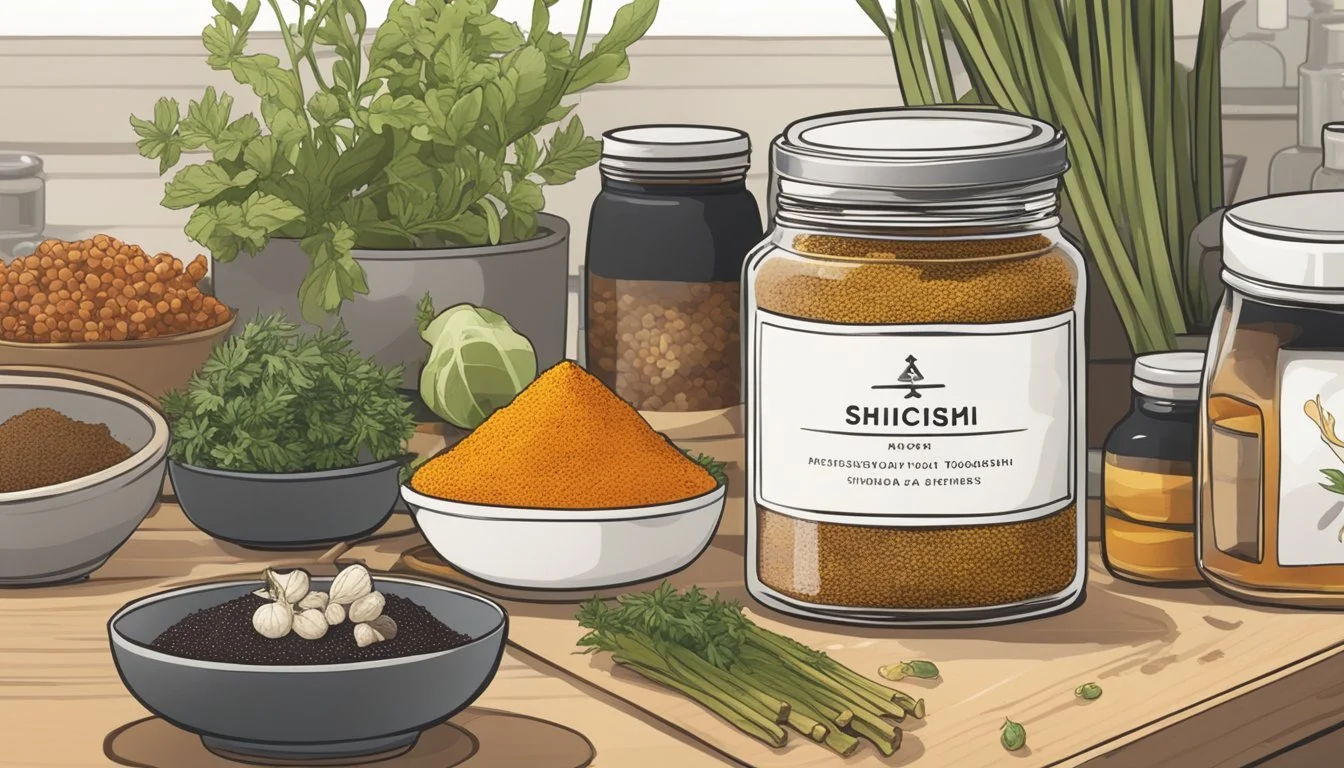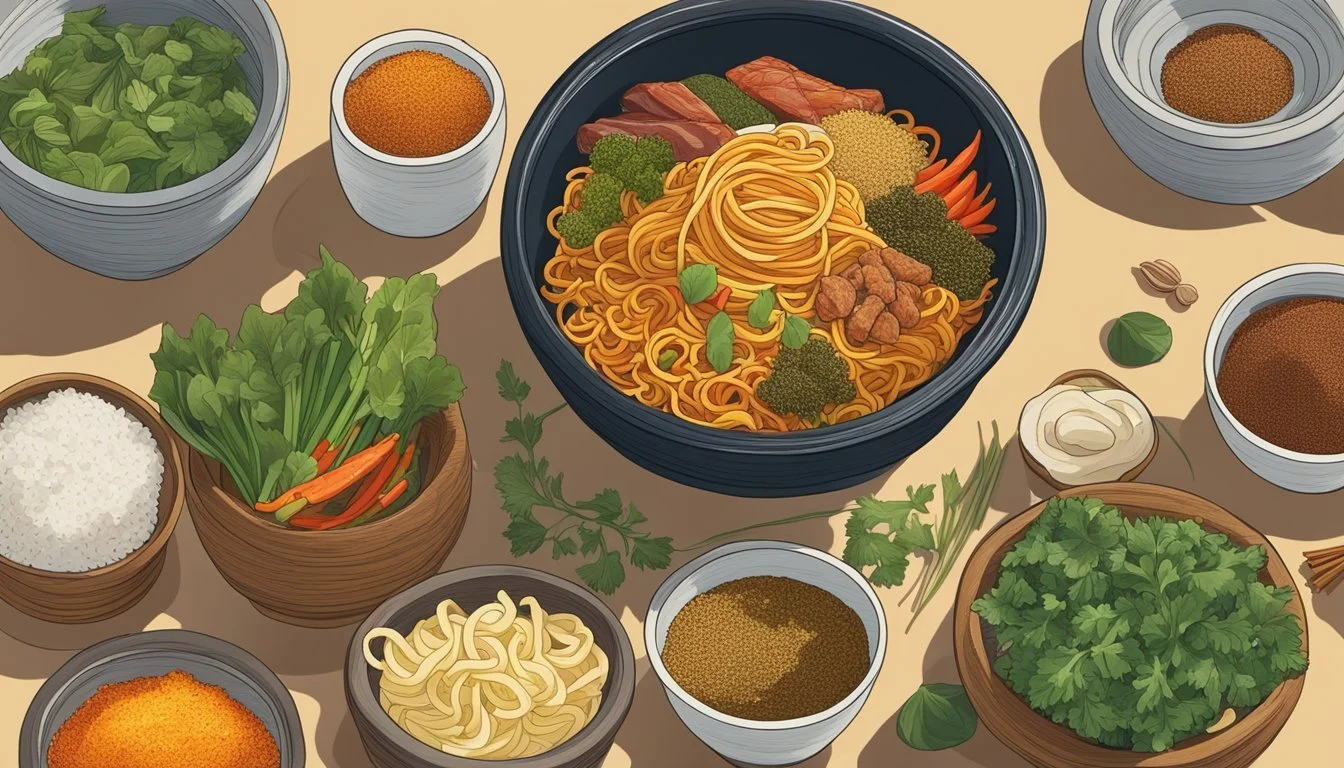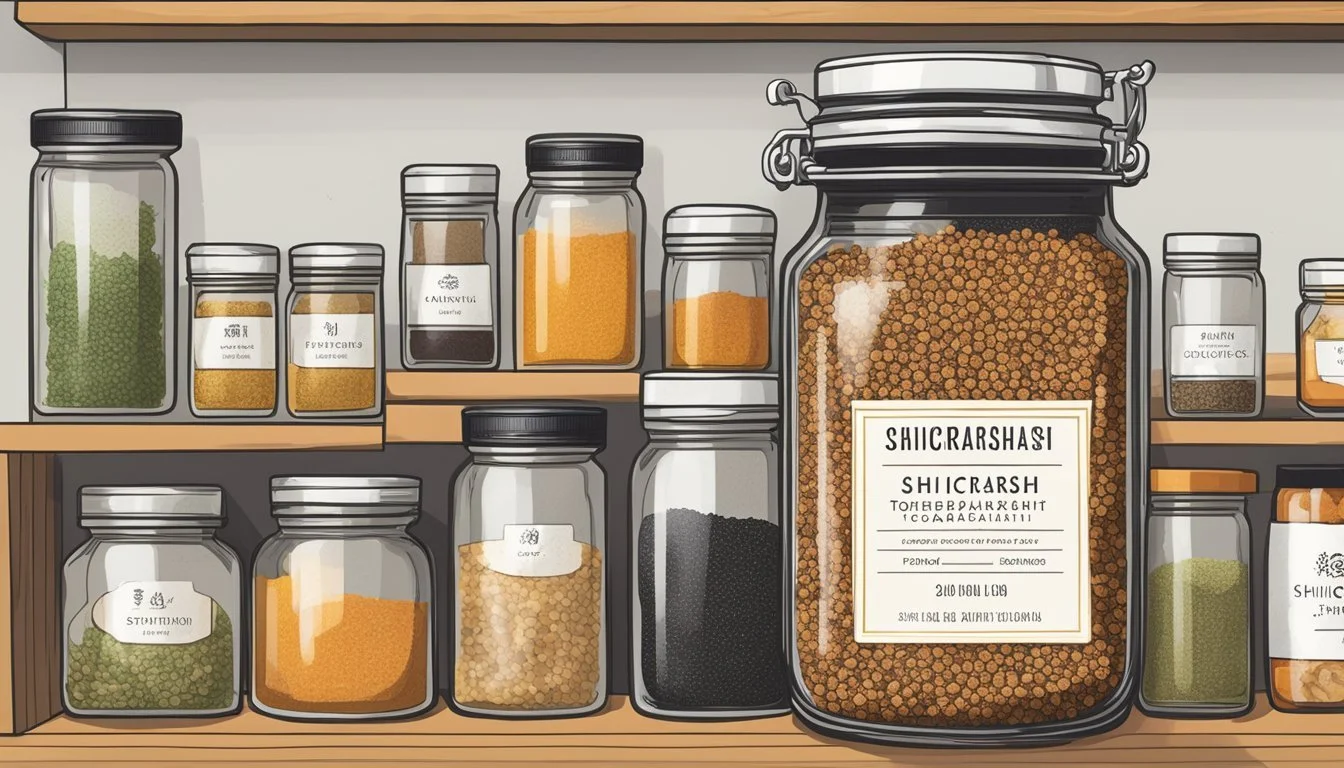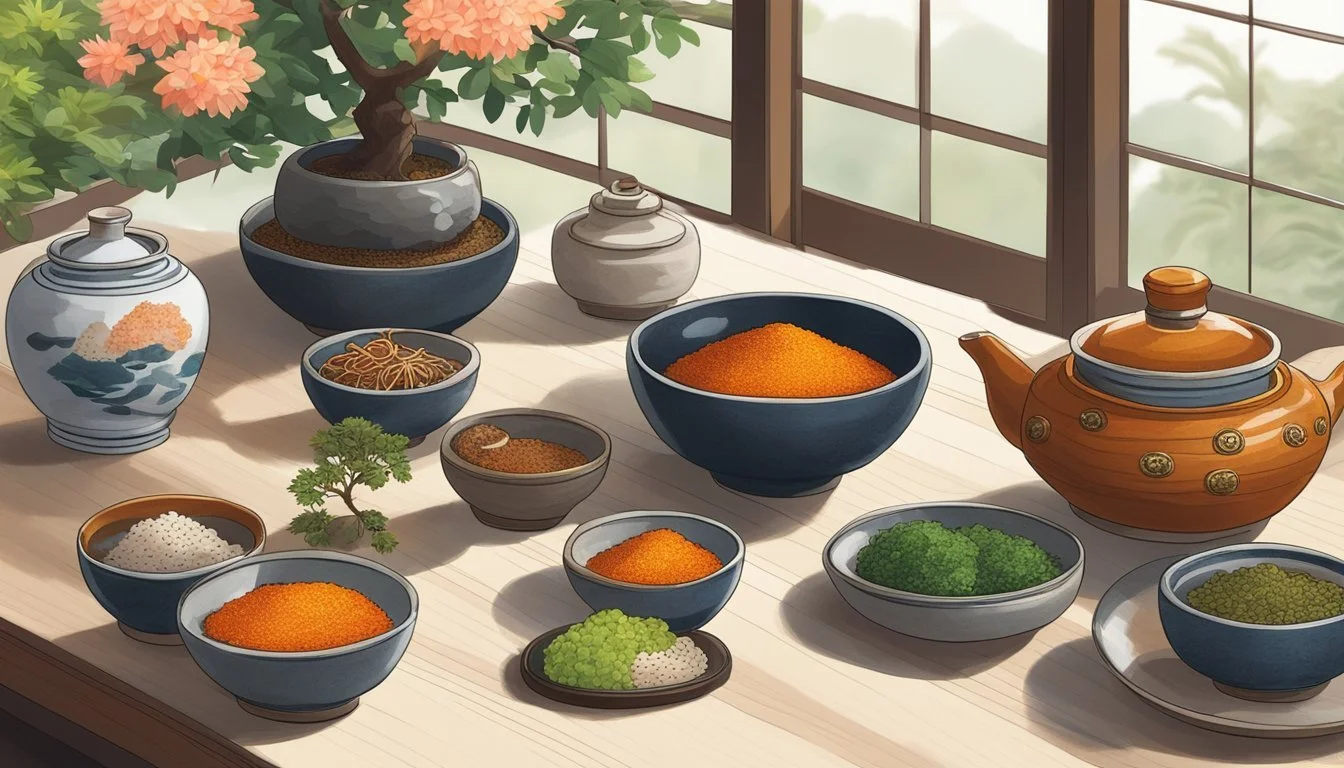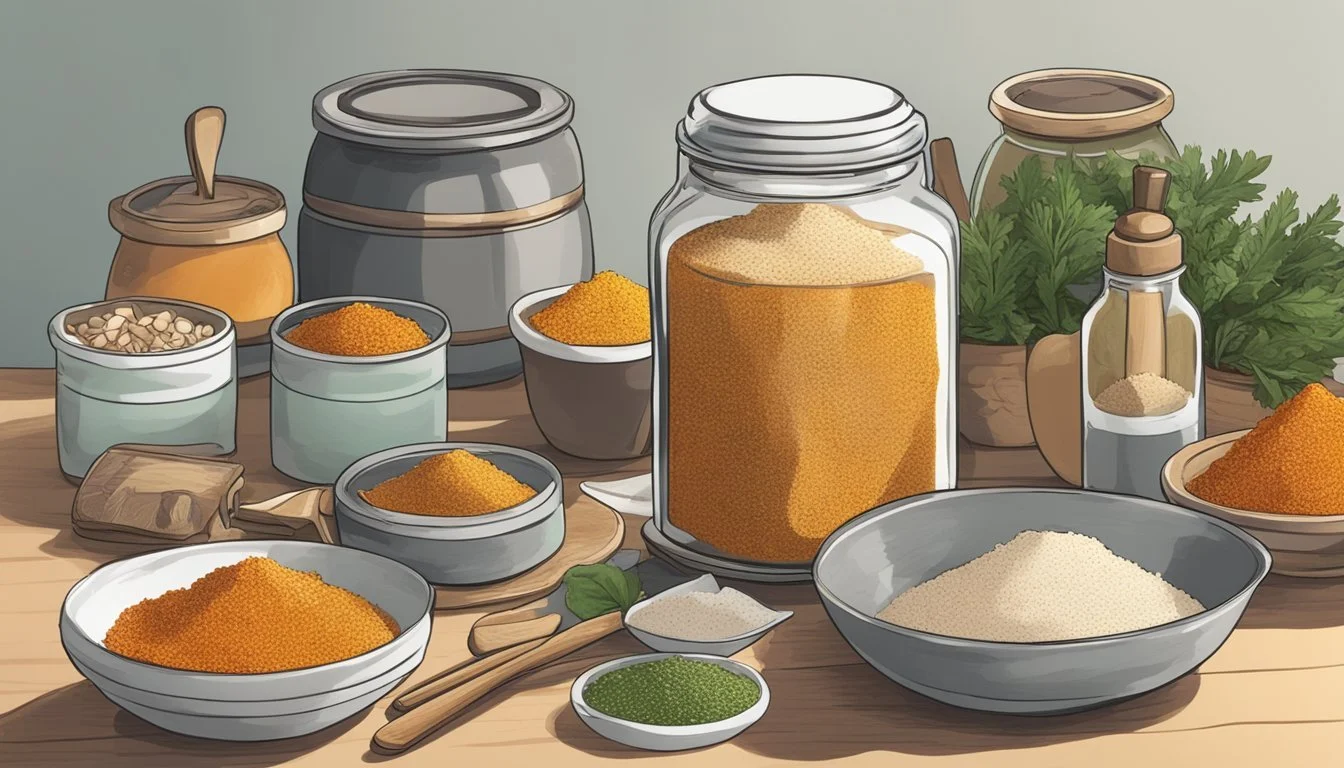Does Shichimi Togarashi Go Bad?
Shelf Life and Storage Tips
Shichimi Togarashi, a popular Japanese spice mix, is beloved for its unique blend of seven ingredients, typically including chiles, dried orange peel, Sichuan peppercorns, sesame seeds, dried ginger, and seaweed. Like all spices, Shichimi Togarashi can go bad, losing its potency and flavor over time. Proper storage is essential to maintain its vibrant taste and aromatic qualities.
To keep Shichimi Togarashi fresh, it's recommended to store it in a cool, dry place, such as a pantry or spice cabinet. Exposure to sunlight and moisture can quickly degrade the delicate balance of the seven ingredients, impacting its effectiveness in seasoning dishes. When kept in optimal conditions, Shichimi Togarashi can retain its quality for up to six months.
Understanding Shichimi Togarashi’s shelf life helps in planning how and when to use it in your cooking. From sprinkling it over soups and noodles to mixing it into marinades and salad dressings, ensuring the spice mix is fresh will elevate the flavors in your Japanese cuisine dishes.
Understanding Shichimi Togarashi
Shichimi Togarashi, a versatile and flavorful Japanese spice blend, combines a variety of ingredients to create a unique taste. Learn about its origins, composition, and how it compares to Ichimi Togarashi.
Historical Background
Shichimi Togarashi, often referred to as "Seven Spice Pepper," has roots dating back to the 17th century in Japan. It originated in herbal medicine shops and became popular in the Edo period. Traders initially sold it as a medicinal blend before it transformed into a culinary staple.
The introduction of chili pepper to Japan, brought by Portuguese traders, played a significant role in its creation. Over time, Shichimi Togarashi has remained a beloved spice, enhancing various Japanese dishes with its unique flavor.
Composition and Variations
The classic Shichimi Togarashi blend includes seven primary ingredients: chili pepper, orange peel, sesame seeds, hemp seeds, ginger, nori (seaweed), and sansho (Japanese pepper). The exact composition can vary by region and personal preference, but these seven components are the core.
Each ingredient contributes distinct characteristics: chili pepper for heat, orange peel for citrusy notes, sesame seeds for nuttiness, hemp seeds for texture, ginger for zesty warmth, nori for umami depth, and sansho for a peppery finish. These elements combine to make Shichimi Togarashi a versatile addition to soups, noodles, and rice dishes.
Comparison with Ichimi Togarashi
While Shichimi Togarashi includes a mix of seven spices, Ichimi Togarashi is simpler, focusing solely on ground chili pepper. This single-ingredient spice offers straightforward heat without the complex layers found in Shichimi Togarashi.
Ichimi Togarashi's pronounced spiciness makes it suitable for those who prefer pure chili heat. In contrast, Shichimi Togarashi's blend provides a multifaceted flavor profile, making it a favorite for adding depth to dishes. The linguistic similarity in their names, with "Ichimi" meaning "one flavor" and "Shichimi" meaning "seven flavors," can sometimes lead to confusion, but their culinary applications differ significantly.
Culinary Uses of Shichimi Togarashi
Shichimi Togarashi is a versatile spice blend that enhances the flavors of various dishes. From traditional Japanese cuisine to global culinary applications, it provides a unique spicy and umami taste.
Enhancing Japanese Dishes
Shichimi Togarashi is often sprinkled on udon or soba noodles, adding a spicy kick.
It also complements rice dishes like donburi by imparting heat and umami flavor.
In yakitori, the blend enhances grilled chicken skewers with its subtle heat, while tempura benefits from its spicy touch.
Miso soup and other broths become more flavorful with a dash of this seasoning. For noodle dishes, its smoky-sweet heat integrates seamlessly with the broth and toppings.
Versatility in Global Cuisine
In Western cuisines, Shichimi Togarashi is used beyond traditional dishes.
It's a fantastic addition to grilled meats, providing a spicy boost to steaks and burgers.
In salads, it can be mixed with vinaigrettes, olive oil, and lemon juice to create a zesty dressing.
In marinades, it pairs well with soy sauce and honey, giving a balanced heat to stir-fry and grilled vegetables. Even unconventional dishes like pizza can benefit from its unique spice profile.
Seasoning Blends and Substitutes
Shichimi Togarashi can be part of various seasoning blends.
For instance, it can elevate the flavors of furikake when combined with sesame seeds and dried fish flakes.
Nanami Togarashi is a close substitute, sharing many similar ingredients but with subtle differences.
In the absence of Shichimi Togarashi, other spicy blends like cayenne pepper mixed with a touch of citrus zest can mimic its heat and flavor. Though nothing completely replaces its unique profile, these alternatives provide a similar spicy and umami flair to dishes.
Shelf Life and Storage
Shichimi togarashi is a versatile spice blend. Proper storage is crucial to maintain its aroma, taste, and texture.
Signs of Spoilage
Identifying when shichimi togarashi has gone bad is key. Look for changes in aroma; it should have a fragrant, spicy scent. A musty or weak smell indicates it’s past its prime.
Taste is another indicator. Fresh shichimi togarashi offers a distinctive flavor profile. A dull, flat taste means it’s time to replace it. Examine the texture; it should be dry and free-flowing. Clumping or moisture presence suggests spoilage.
A visual inspection can also help: discoloration or mold signals it’s time to discard the spice.
Best Storage Practices
Proper storage extends the shelf life of shichimi togarashi. Store it in an airtight container to preserve its flavor. Choose a dry, cool place such as a pantry or spice cabinet.
Exposure to sunlight deteriorates the spice, so keep it away from windows. Label the container with the purchase date to monitor its age. Avoid storing it near the stove or other heat sources, as excess heat and humidity can degrade its quality.
For best results, ensure the container is tightly sealed after each use. This helps maintain its aroma and taste.
Extending Shelf Life
To extend the shelf life of shichimi togarashi, consider these practices. Toasting the spice briefly before use can refresh its flavors. Store in smaller quantities to reduce exposure to air each time it’s opened.
Utilize silica gel packets inside the container to keep moisture at bay. Regularly check the spice for any signs of spoilage to ensure it’s still good to use.
By adhering to these methods, shichimi togarashi can stay fresh and liven up your dishes for up to six months. Keeping the spice in optimal storage conditions helps in maintaining its peak quality and flavor.
Health and Nutrition
Shichimi Togarashi offers several health benefits thanks to its mix of nutrient-rich ingredients. Key components like sesame seeds, seaweed, and ginger play significant roles.
Nutritional Overview
Shichimi Togarashi contains various ingredients, each contributing unique nutritional benefits. Sesame seeds are high in healthy fats, protein, and several important minerals such as calcium, magnesium, and iron.
Seaweed, another ingredient, is rich in iodine, calcium, and vitamins A and C. This ensures thyroid health and helps in maintaining strong bones.
Additionally, the chili peppers used in this blend provide a good source of vitamins A and C. These contribute to an improved immune system and eye health. Overall, this spice mix offers a nutritional boost when used in moderation.
Medicinal Properties
Several ingredients in Shichimi Togarashi are known for their medicinal properties. Ginger is widely recognized for its anti-inflammatory and antioxidant effects, which can help in reducing joint pain and nausea.
Chili peppers contain capsaicin, known for its metabolism-boosting and pain-relieving properties.
Seaweed provides anti-viral and anti-inflammatory benefits, thanks to its high content of bioactive compounds. Lastly, sesame seeds are rich in antioxidants and have been shown to support heart health and reduce inflammation, adding further medicinal value to this spice blend.
Cultural Significance
Shichimi togarashi holds a special place in Japanese culture and cooking. Originally crafted during the Edo period (1603-1868), it has since evolved into a staple seasoning appreciated for its unique blend of seven spices.
This blend exemplifies the Japanese culinary tradition of balancing flavors. Each ingredient contributes to the mix's complex profile, adding layers of taste and aroma. It is not just about spice; it’s about harmony.
Shichimi togarashi is often used in traditional dishes like noodles (udon and soba), grilled meats, and seafood. Its versatility also extends to modern cuisine, where it enhances everything from popcorn to salads.
One key to the appeal of shichimi togarashi is its connection to local food culture. It reflects regional variations, with differences in spice blends depending on the area. For example, in Tokyo, the Yagenbori brand is famous for its historical recipe.
The seasoning has become a symbol of culinary expertise and tradition, representing Japanese innovation in flavoring food. This spice mix also plays a role in festivals and is commonly found in gift packages, embodying the Japanese ethos of sharing good taste.
In Japan, the preparation and application of shichimi togarashi are almost a ritual, reflecting a deep appreciation for craftsmanship in food. The spice mix not only enhances the taste but also ties into the broader cultural and social practices, highlighting its cultural significance.
Tips and Tricks for Usage
Using shichimi togarashi can enhance the heat and aroma of your dishes. Learn how to create texture and complexity, and even prepare your own spice blend at home.
Enhancing Flavors
Shichimi togarashi enhances the umami in various dishes. It is a versatile spice that can be easily sprinkled over soups, noodles, rice dishes, and grilled meats to add an extra layer of flavor. Finish your dishes with a light sprinkle right before serving to retain the aromatic seven spices blend's potency.
Mix shichimi togarashi with soy sauce, ginger, garlic, and a touch of honey to create a flavorful marinade. This combination works well with chicken, beef, and tofu, infusing them with a nutty, spicy, and slightly sweet taste.
Creating Texture and Complexity
The versatile nature of shichimi togarashi allows it to enhance the texture of dishes. The combination of sesame seeds and dried orange peel contributes to a crunch and added depth. It pairs wonderfully with salad dressings, imparting a nutty flavor and floral notes to vinaigrettes.
Add this spice blend to your stir-fries for a delightful zing that complements the crunch of vegetables like bell peppers and snap peas. The dried red chile pepper provides a sharp heat, while the other ingredients add layers of complexity.
Homemade Spice Mix Preparation
Creating your own shichimi togarashi at home allows for customization. A standard recipe includes red chile pepper, sesame seeds, dried orange peel, nori (seaweed), ground ginger, hemp seeds, and sansho (Japanese pepper).
Grind the ingredients separately before mixing to achieve a uniform texture. Adjust the heat by varying the amount of red chile pepper. Store your homemade mix in an airtight container, away from direct sunlight, to maintain its freshness for up to six months. This way, you always have a potent and aromatic blend at hand for your culinary needs.
Frequently Asked Questions
Does shichimi togarashi go bad?
Yes, shichimi togarashi can lose its potency over time. While it may not spoil like fresh ingredients, it does degrade in flavor.
How should shichimi togarashi be stored?
Store shichimi togarashi in an airtight container in a cool, dry place like a pantry. Avoid exposure to sunlight to maintain its flavor and aroma.
What is the shelf life of shichimi togarashi?
Shichimi togarashi can maintain its quality for up to six months when stored properly. After that, the flavors may start to diminish.
Can you freeze shichimi togarashi?
Freezing shichimi togarashi is not recommended as it can absorb moisture, which impacts flavor and texture.
How can you tell if shichimi togarashi is still good?
Smell and taste a small amount. If the aromas are weak or the flavors dull, it's time to replace it.
Can homemade shichimi togarashi be stored the same way as store-bought?
Yes, homemade shichimi togarashi should also be kept in an airtight container in a cool, dry place. It follows the same storage guidelines as the store-bought blend.
Is it possible to rejuvenate old shichimi togarashi?
No, once the spice blend loses its potency, it cannot be brought back to its original flavor. It's best to replace it with a fresh batch.
Does storing shichimi togarashi in glass or plastic containers matter?
Either glass or plastic is fine as long as the container is airtight. Glass may be preferred as it is less likely to retain old odors compared to plastic.
Is it safe to use expired shichimi togarashi?
Using expired shichimi togarashi is generally safe as long as it has been stored properly, but the flavor will be less intense. Replacing it will ensure the best taste in your dishes.
What are the signs of improperly stored shichimi togarashi?
Signs of improperly stored shichimi togarashi include clumping, faded color, and a loss of aroma. These indicate that the spice blend has been exposed to moisture or sunlight.

